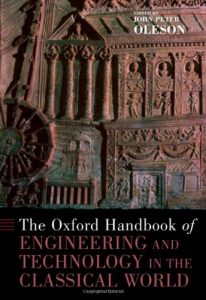
A few friends and family have been curious about how long it’s taken for me to decide to write a historical mystery. They know full well that my enthusiasm for crime fiction, as well as for the ancient world, goes back decades.
It’s a good question, and I’ve realised that a lot of the answer has to do with research. I learned how to do serious research when I was writing essays as an undergraduate in the 1980s. We got a question from a tutor, along with a reading list, and headed for the Bodleian Library. We looked up those books and journals in the massive card index, flicking through the thousands of cards painstakingly written by generations of librarians. Making a note of the arcane numbers that would tell us where to find what we needed, we went searching the shelves. If we were lucky, the book was there. If we weren’t, there was a green slip with a note of a reading desk number, where the person reading it was sitting. If they’d already finished with the book, we could have it. If not, we went looking for the next one on our list. We soon grew to dread the weeks when it became obvious a whole lot of tutors had included the same book on different reading lists. I soon grew to seriously dislike those few students who would amass six or eight books at once, and insist they were using all of them simultaneously, rather than going through them one at a time, so everyone could get on with their reading.
All of that meant spending hours in the Bodleian. Don’t get me wrong; I loved it. But even living within reach of Oxford’s libraries, committing that amount of time at evenings and weekends really was a non-starter for years, when I had other work and family responsibilities. Besides, no matter how brilliant your idea for a historical mystery might be, no one’s going to give you a reading list to help you do the right research. And you really do need to do the research. Getting a seemingly insignificant detail wrong can throw a reader out of a book completely, while making a factual error can bring the central premise of a plot crashing down. It doesn’t happen often, thankfully, but I’ve come across too many instances in my own reading to be ready to risk it. So that doubles the research challenge, when you need to work out what you need to know, before you can even go searching for it.
So what changed? New technology arrived! Go into the Bodleian nowadays, and that great card index is long gone. Computer screens invite you to search the online catalogue, though you don’t often see people using them, because Wi-Fi means you can do that direct from your laptop. You can do it from home, before you even head for the library. More than that, you can search for the key words that help pinpoint what you need to read. Descriptions of books and papers generally indicate if they’ve got what you’re looking for, and equally usefully, if not. I’ll have my list of selected shelf references ready before I even set foot in the library these days. If the book’s not on the shelf? Increasingly, that’s no problem either, because there’s also an electronic version that I can access from my laptop or tablet.
That’s not all. Reading papers from learned journals frequently used to mean braving the Bodleian’s wheeled wooden library steps to get unwieldy volumes down from the reading room’s higher shelves. These days, so many publications, institutions and individual academics make their research available online through websites like JSTOR and Academia.edu. Once again, I can search for key words. I can download papers and read them at my own convenience. When I check a bibliography, and spot what looks like a potentially useful book for more detailed reading, I can look that up online as well, and see if it’s got what I need.
All of this has made getting up to date with current scholarship on Classical Athens possible. It would have been far, far more difficult ten, or even five, years ago. I’ve been able to discover all sorts of fascinating things that are just crying out to be used as a motive for murder. Equally important, I’ve been able to double-check the things that it seems we don’t yet know, so I can be confident (fingers crossed) that I’m free to invent something plausible.
Though rest assured, you need not worry that Shadows in Athens is going to feel like some textbook. The generous quotes from advance readers should make that quite clear. That’s because I’m still enjoying fast-paced, inventive and absorbing crime novels, ancient and modern, from a wide range of writers. That’s equally vital reading, because those books constantly remind me that it’s the people, the place and the plot that make a good crime novel. That’s what all this research must serve, first and last, and I’m not about to forget it.

